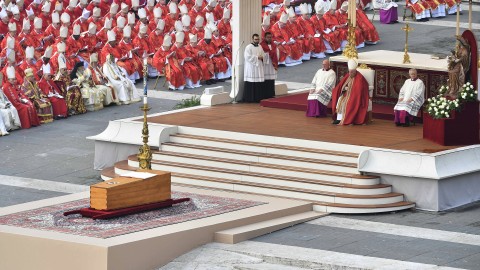Liturgy for Benedict’s funeral mass highlights unity in a divided church

Under a foggy gray sky on January 5, a historic funeral in St. Peter’s Square saw the sitting pontiff, Pope Francis, preside at a somber and simple ceremony for his predecessor, Emeritus Pope Benedict XVI, in a liturgy reflecting the rare situation of having had, for the past 10 years, two men in the Vatican with the title of pope.
Nearly 50,000 people, including some 3,700 priests, attended the mass, a noticeably smaller number than the usual crowd when a pope dies, but reflecting the relative obscurity of the last decade of Benedict’s life, spent in quiet retirement after he became the first pope to resign in 600 years.
Thursday’s mass was said in Latin, with the readings in English and Spanish, with Francis overseeing a liturgy that, according to James Bradley, a canon law expert at Catholic University of America and member of the Society for Catholic Liturgy, underlined a spirit of unity in the church and respect for Benedict’s former role.





